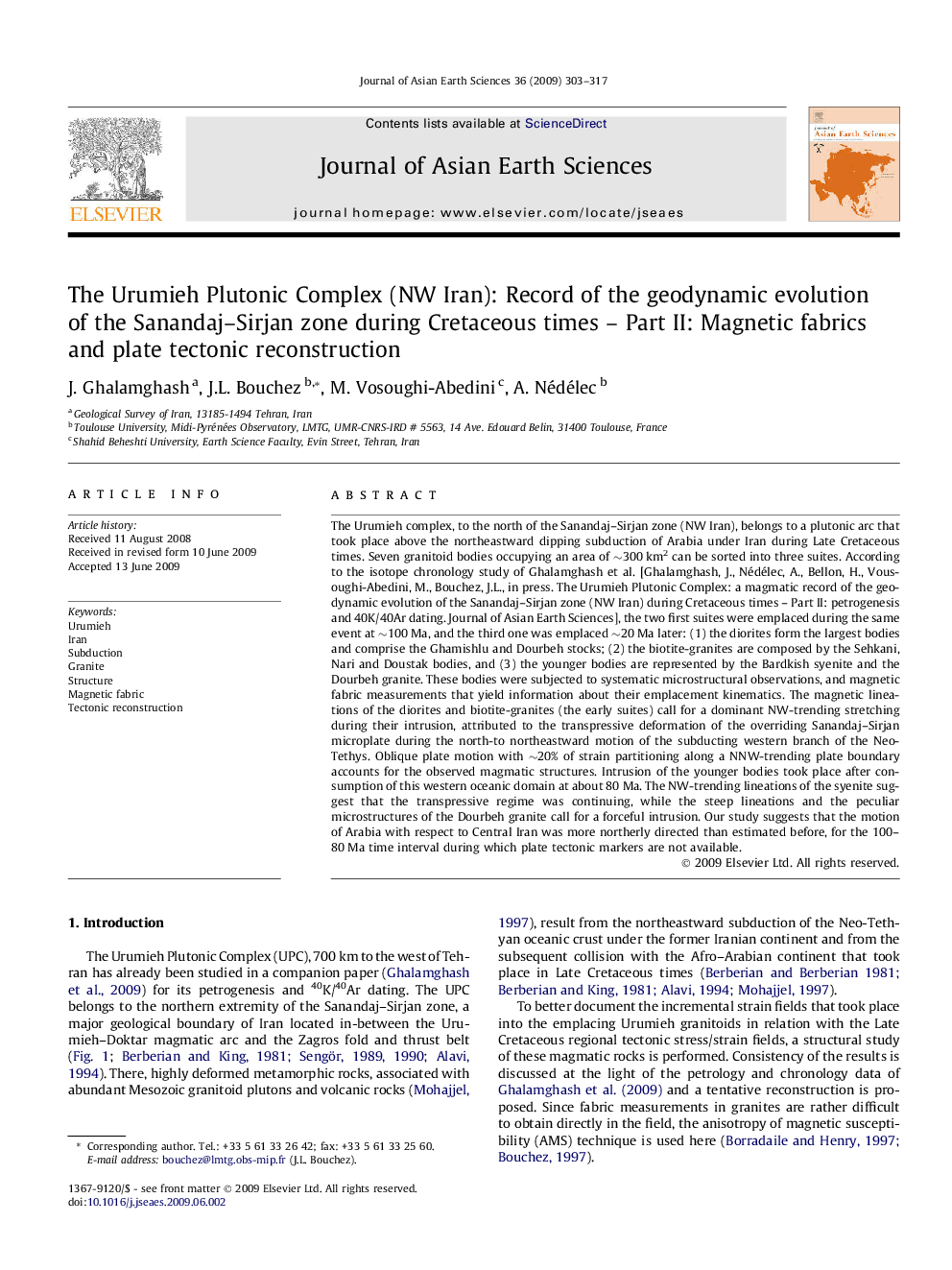| کد مقاله | کد نشریه | سال انتشار | مقاله انگلیسی | نسخه تمام متن |
|---|---|---|---|---|
| 4732311 | 1640428 | 2009 | 15 صفحه PDF | دانلود رایگان |

The Urumieh complex, to the north of the Sanandaj–Sirjan zone (NW Iran), belongs to a plutonic arc that took place above the northeastward dipping subduction of Arabia under Iran during Late Cretaceous times. Seven granitoid bodies occupying an area of ∼300 km2 can be sorted into three suites. According to the isotope chronology study of Ghalamghash et al. [Ghalamghash, J., Nédélec, A., Bellon, H., Vousoughi-Abedini, M., Bouchez, J.L., in press. The Urumieh Plutonic Complex: a magmatic record of the geodynamic evolution of the Sanandaj–Sirjan zone (NW Iran) during Cretaceous times – Part II: petrogenesis and 40K/40Ar dating. Journal of Asian Earth Sciences], the two first suites were emplaced during the same event at ∼100 Ma, and the third one was emplaced ∼20 Ma later: (1) the diorites form the largest bodies and comprise the Ghamishlu and Dourbeh stocks; (2) the biotite-granites are composed by the Sehkani, Nari and Doustak bodies, and (3) the younger bodies are represented by the Bardkish syenite and the Dourbeh granite. These bodies were subjected to systematic microstructural observations, and magnetic fabric measurements that yield information about their emplacement kinematics. The magnetic lineations of the diorites and biotite-granites (the early suites) call for a dominant NW-trending stretching during their intrusion, attributed to the transpressive deformation of the overriding Sanandaj–Sirjan microplate during the north-to northeastward motion of the subducting western branch of the Neo-Tethys. Oblique plate motion with ∼20% of strain partitioning along a NNW-trending plate boundary accounts for the observed magmatic structures. Intrusion of the younger bodies took place after consumption of this western oceanic domain at about 80 Ma. The NW-trending lineations of the syenite suggest that the transpressive regime was continuing, while the steep lineations and the peculiar microstructures of the Dourbeh granite call for a forceful intrusion. Our study suggests that the motion of Arabia with respect to Central Iran was more northerly directed than estimated before, for the 100–80 Ma time interval during which plate tectonic markers are not available.
Journal: Journal of Asian Earth Sciences - Volume 36, Issues 4–5, 18 October 2009, Pages 303–317